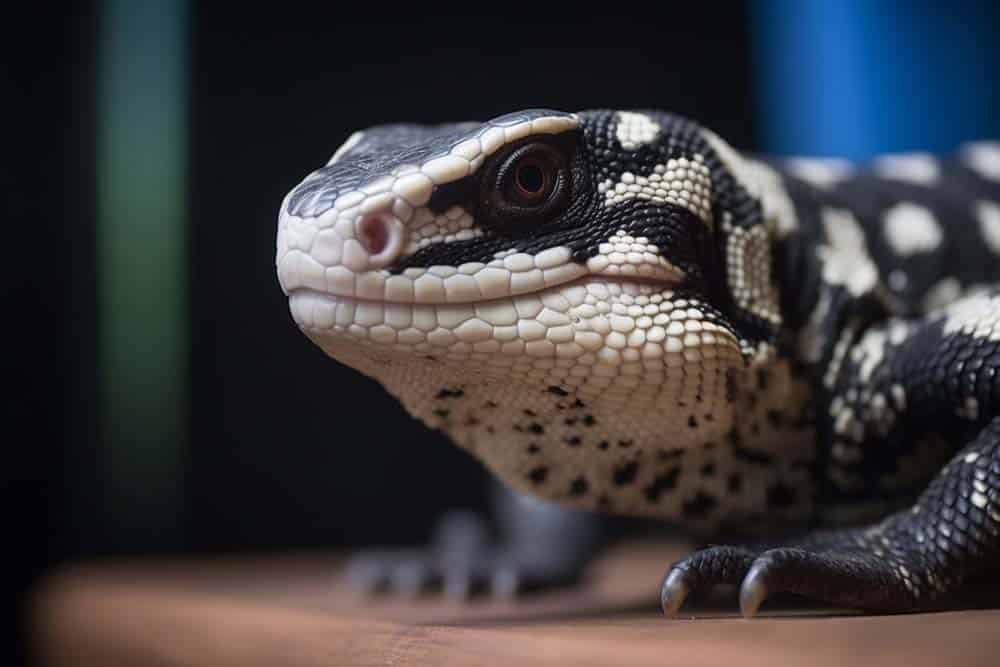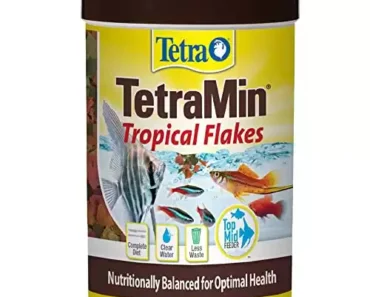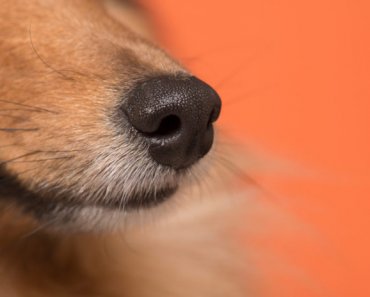
Tegu lizards are large, intelligent, and fascinating reptiles that have become increasingly popular as pets in recent years. These amazing creatures can make wonderful companions for dedicated and experienced reptile keepers, but they do require a significant amount of time, effort, and resources to care for properly. There are several different species of tegu lizards available to pet owners, including the Argentine black and white tegu, red tegu, blue tegu, and gold tegu.
Each species has its own unique characteristics and care requirements. In general, tegus are known for their striking appearance and calm demeanor when properly socialized.
They can grow up to four feet in length and weigh over 30 pounds in some cases. Tegus are also highly intelligent animals that can be trained to recognize their owners and respond to basic commands.
Why Tegus Are Becoming Increasingly Popular Among Reptile Enthusiasts
There are several reasons why tegus have become more popular among reptile enthusiasts in recent years. One factor is their impressive size and striking appearance. Many people find these beautiful creatures fascinating to observe and enjoy the challenge of providing them with proper care.
Another reason why people may choose a tegu lizard as a pet is their relatively docile nature compared to other large reptiles such as monitors or crocodilians. With proper socialization from an early age, they can form strong bonds with their owners or caretakers.
Additionally, some people prefer exotic pets because they find traditional companion animals like dogs or cats boring or too common. A well-cared-for tegu lizard can provide just as much companionship as any other pet while offering a unique experience that cannot be replicated with more conventional domesticated animals.
The availability of educational resources about how to care for these animals, as well as captive-bred specimens, has made keeping tegus more accessible to a wider audience. As people become more interested in reptile care and conservation, tegu lizards offer a unique and engaging opportunity to learn about these amazing creatures and their natural habitats.
Tegu Lizard Basics
Physical Characteristics and Size Range
Tegu lizards are impressive creatures with unique and striking physical features. They have a broad head, strong neck, muscular body, and long tail.
Their skin is covered in small scales that can be smooth or bumpy depending on the species. Tegus come in various colors ranging from black and white to shades of red, blue, and yellow.
They are also known for their sharp teeth and claws. Tegus are large lizards that can grow up to four feet in length and weigh up to 30 pounds.
Their size depends on their species as well as their gender; males tend to be larger than females. The Argentine black-and-white tegu is one of the most popular species kept as pets due to its impressive size and unique appearance.
Natural Habitat and Behavior in the Wild
Tegus are native to South America, where they live in a variety of habitats such as forests, savannas, grasslands, swamps, and even urban areas. They are primarily ground-dwellers but can sometimes be found climbing trees or swimming in water sources. In the wild, tegus are opportunistic omnivores that eat a variety of foods including insects, small mammals, birds’ eggs young reptiles or amphibians; fruits such as figs and berries; vegetables like leafy greens; carrion from dead animals too
Tegus are also known for their intelligence and curious nature. In the wild they explore their surroundings actively looking for food sources thus making them excellent hunters.
Lifespan And Potential Health Issues
Tegu lizards can live up to 20 years if provided with proper care throughout their lives. However there is no guarantee that they will live this long since it depends on several factors such as their diet, environment, and genetics. Tegus can also be prone to various health issues if not taken care of properly.
Some common health issues include metabolic bone disease, respiratory infections, skin infections or parasites. To avoid these problems owners should take their tegus for regular checkups and maintain a clean living area with appropriate temperature levels and humidity.
Tegu lizards are fascinating creatures with unique physical features and interesting behaviors in the wild. Furthermore they can live long healthy lives if provided with the proper care that is required of them.
Housing Requirements
Size and Type of Enclosure
Tegus can grow to be quite large, with some species reaching up to 4 feet in length. As such, it is important to provide them with an appropriately-sized enclosure that allows them plenty of room to move around and explore. For adult tegus, a minimum enclosure size of 4 feet wide by 8 feet long is recommended.
Juvenile tegus can be kept in smaller enclosures temporarily, but should be moved into larger enclosures as they grow. When selecting an enclosure for your tegu, it is important to choose one that is sturdy and secure.
Tegus are powerful animals and can easily escape from weak or poorly-constructed enclosures. A custom-built enclosure made from wood or PVC is a good option for housing a tegu, as it allows for ample space while also providing strong walls that won’t give way under the weight of the lizard.
Temperature, Humidity, and Lighting Requirements
Tegus are native to warm climates and require specific environmental conditions in order to thrive in captivity. The ideal temperature range for a tegu’s enclosure is between 80-90 degrees Fahrenheit during the day and no lower than 70 degrees Fahrenheit at night.
This can be achieved through the use of heating lamps or heating pads placed under one end of the enclosure. In addition to temperature regulation, it is important to maintain appropriate levels of humidity within the enclosure.
Tegus require a humidity range between 60-80%, which can be accomplished through daily misting or by using a humidifier. Proper lighting is also crucial for tegu health and wellness.
They require access to UVB lighting in order to metabolize calcium properly and prevent metabolic bone disease. This can typically be achieved through high-quality fluorescent lighting placed over the basking area within the enclosure.
Substrate Options for Enclosure Flooring
The substrate used in a tegu enclosure serves multiple purposes, including absorbing waste and providing a comfortable surface for the lizard to walk on. Suitable substrate options include coconut coir, sphagnum moss, or reptile carpet.
Avoid using loose substrates such as sand or gravel, which can be ingested by the tegu and lead to impaction or digestive issues. It is important to regularly clean and replace the substrate in your tegu’s enclosure in order to maintain proper hygiene levels and prevent illness.
If using a loose substrate such as coconut coir or sphagnum moss, it should be completely replaced every 4-6 weeks. Reptile carpet can be washed and reused multiple times before needing replacement.
Overall, providing appropriate housing conditions for your tegu is crucial for maintaining its health and well-being in captivity. By selecting an appropriately-sized enclosure and ensuring proper temperature, humidity, lighting, and substrate conditions are met, you can create a comfortable and safe home for your pet lizard.
Diet and Nutrition
Meat and Other Protein Sources for Tegus
Tegus are omnivores and require a balanced diet consisting of both meat and vegetables. When it comes to meat, tegus should be fed a variety of animal proteins such as chicken, turkey, beef heart, eggs, and insects. It’s important to avoid feeding your tegu raw meat or any type of processed food as this can lead to digestive issues or bacterial infections.
You can choose to feed your tegu either fresh or frozen-thawed prey. It is essential to ensure that you feed the right amount of protein in their diet.
Fruits and Vegetables for Tegus
In addition to animal proteins, tegus should also be given fruits and vegetables as part of their daily diet. Some good options include berries, bananas, papayas, mangos, kale, collard greens, carrots and sweet potatoes. Fruits should be fed in moderation due to their high sugar content while vegetables can be offered daily in small amounts.
How To Properly Feed Your Tegu
When feeding your tegu lizard it’s important not to overfeed them. Overfeeding can cause obesity which may lead to significant health issues such as heart disease or liver failure.
A general rule is that a healthy adult tegu should consume at least 10% of its body weight per week when it comes to food. It’s also crucial that you provide fresh drinking water daily in a shallow dish that the lizard can easily access without tipping over the bowl.
Potential Health Issues Related To Diet
It’s important that you monitor your pet’s health closely by observing its eating habits carefully. If there are any changes in their appetite or stool quality (such as diarrhea) then it could suggest an issue with their diet. If you notice any red flags, you should take them to the vet for a check-up.
An improper diet can lead to serious health issues in tegus, such as obesity or metabolic bone disease. This is why it’s important to provide a balanced diet that meets all of your tegu’s nutritional needs.
Providing the right kind of diet and nutrition is essential for keeping your tegu healthy and happy. Feeding them high-quality proteins, fruits, and vegetables in the right proportions can ensure that they get all the essential nutrients they need.
It’s important to monitor their eating habits closely and seek veterinary care if there are any concerning changes. By following these guidelines you can give your pet tegu the best possible life full of health and happiness.
Tegu Lizard Behavior
Socialization with humans and other animals
Tegus are known for their friendly and curious nature, making them great pets for those who enjoy socializing with their animals. Socialization starts at a young age, and it is important to handle your tegu regularly to help them become comfortable with human interaction.
However, it is essential to remember that tegus have different personalities, so some may take longer than others to adjust. When interacting with your tegu, try to remain calm and gentle.
Avoid sudden movements or loud noises that might startle them. Offer treats or food by hand so they associate you with positive experiences.
Socialization can also be done through supervised playtime outside of the enclosure or taking your tegu on a leash for walks in the park. It is also important to introduce your tegu gradually to other pets in the household.
Some tegus may get along well with dogs or cats while others may not tolerate them at all. Always supervise interactions between pets until you are confident they can coexist peacefully.
Training techniques for behavior modification
Tegus are intelligent creatures capable of learning behaviors that make living with them more enjoyable. Positive reinforcement is the most effective training technique when working with tegus because they respond well when they know good behavior leads to rewards like food or attention.
One common behavior modification technique used on pet reptiles is target training – this means teaching a reptile like a Tegu lizard how to follow a stick (target) by touching it on specific spots then rewarding desired behaviour such as following instructions like going into its cage etc.. Tegus can be trained using target training techniques which involves guiding the lizard towards goals such as climbing onto your hand or entering their enclosure on command. Another useful technique for modifying undesirable behaviors in pet Tegus involves using commands such as “no” or “down”.
It is important to remember that Tegus are animals, and it can take some time for them to learn and respond to commands. Repetition and consistency are key when training your tegu.
Common behavioral issues seen in pet tegus
Tegus are generally well-behaved pets, but like any animal, they may exhibit undesirable behaviors. One common behavioral issue seen in pet tegus is aggression towards their owners. This can be due to a lack of socialization or improper handling when they were younger.
Another common issue is escape attempts or digging out of their enclosures. This can be dangerous for both the tegu and the people around them, so it is important to ensure that their enclosure is secure and suitable for their size.
Some Tegus may become territorial over their food or toys. This behavior can be modified through training techniques that help them understand that sharing is acceptable behavior.
While Tegu lizards are generally easygoing pets, behavioral issues may arise due to lack of socialization or improper handling. By utilizing positive reinforcement training techniques and providing appropriate housing conditions, most behavioral issues can be addressed successfully.
Breeding Tegus
Tegus are fascinating creatures that not only make great pets, but also have a unique social structure that can be observed during the breeding season. Breeding tegus can be a rewarding experience for pet owners who have experience with reptile breeding and want to learn more about these impressive animals.
Mating behaviors of male and female tegus
When it comes to mating, tegus are known for their complex courting rituals. Male tegus will often approach a receptive female with a head bobbing motion while flicking their tongue. If the female is receptive, she will signal her interest by lowering her body and raising her tail.
The male will then mount the female and copulation will occur. It is important to note that breeding should only be attempted with mature and healthy individuals, as inexperienced breeders or unhealthy individuals can result in failed pregnancies or even death of the animals involved.
Incubation period for eggs
After successful copulation, it is time to prepare for incubation of the eggs. Female tegus typically lay between 15-30 eggs per clutch in a burrow dug deep within their enclosure. Once laid, the eggs should be carefully removed from the enclosure and placed in an incubator set at around 85°F (29°C) with an appropriate substrate such as vermiculite or perlite.
The incubation period for tegu eggs is around 70-100 days depending on temperature and humidity levels during incubation. During this time, it is important to monitor temperature and humidity levels regularly to ensure proper development of the embryos.
Caring for hatchlings
Once hatched, baby tegus should be kept separate from adult lizards in smaller enclosures until they are large enough to move into larger habitats on their own. Hatchlings require frequent feeding and hydration, with small insects or pinky mice being appropriate food sources until they are large enough to consume adult rodents.
It is important to note that breeding tegus should only be attempted by experienced reptile enthusiasts who have researched and prepared appropriately for the process. With the proper care and attention, however, breeding tegus can be a rewarding experience that allows for deeper understanding of these fascinating creatures.
Legal Considerations
If you’re considering getting a tegu lizard as a pet, it’s important to be aware of the laws that regulate their ownership. Tegus are not native to many areas where they are now being kept as pets, so regulations on their ownership can vary depending on where you live. Before acquiring a tegu lizard, make sure you research the laws in your state or country.
Laws regarding ownership of tegus as pets
In some states, owning a tegu lizard is perfectly legal without any special permits or licenses required. However, in other states and countries, tegus may be considered an invasive species or require special permits for ownership. For example, in Florida (USA), owning certain species of tegus is only allowed with a permit from the Florida Fish and Wildlife Conservation Commission.
It’s important to check with your local government agency responsible for animal control or wildlife management to ensure that owning a pet tegu is legal where you live. If you are unsure about the laws regarding tegus in your area, consult with an experienced reptile veterinarian who can provide guidance.
Permits required in certain states or countries
In some places where owning a pet tegu is legal, there may still be requirements for obtaining permits or licenses. For example, even if it is legal to own a particular species of tegu in your state or country without any permits needed, there may be requirements for obtaining permits if you plan to breed them.
Some states and countries also require owners to register their pet reptiles with the proper authorities. This helps governments keep track of exotic pets within their jurisdiction and monitor populations for possible threats to indigenous wildlife populations.
The consequences of breaking the law
It’s important to take regulations surrounding pet reptiles seriously because many wild animals have become invasive pests due to human intervention. Not only do tegus pose a risk to local wildlife if they are released into the wild, but they also have the potential to carry diseases that could be harmful to humans and other animals.
Penalties for breaking laws regarding exotic animal ownership can range from fines to imprisonment. It’s important to comply with all applicable laws and regulations regarding tegu ownership, not only for the well-being of the animals but also to avoid any legal consequences for yourself.
The importance of responsible pet ownership
As a potential owner of a tegu lizard or any other exotic pet, it’s your responsibility to educate yourself on all relevant laws and regulations before making a purchase. Additionally, it’s important to understand the needs of these animals so you can provide them with proper care and prevent them from becoming invasive pests. By being responsible pet owners and complying with all applicable regulations, we can help protect both native wildlife populations and our own health and safety.
Conclusion
Throughout this article, we have explored the basics of caring for a tegu lizard as a pet. We have delved into their physical characteristics, natural habitat and behavior in the wild, housing requirements, diet and nutrition, behavior modification and breeding techniques.
We have also discussed legal considerations for owning a tegu as a pet. It is clear that owning a tegu lizard requires an investment of time, effort and money to ensure their well-being.
However, with proper care and attention to their needs, they can be wonderful pets for reptile enthusiasts. One important point to remember is that tegus are not suitable for everyone.
They require more care than some other reptiles commonly kept as pets such as geckos or bearded dragons. Their enclosure can take up quite a bit of space in your home and they require daily interaction with their owners to prevent behavioral issues from arising.
If you do choose to bring a tegu lizard into your home as a pet, make sure you are fully prepared and committed to providing them with the proper care they need. This includes investing in the right type of enclosure, providing them with optimal temperatures and humidity levels, feeding them a balanced diet of meat, vegetables and fruits while also supplementing their diet with calcium and vitamin D3.
Owning a tegu lizard can be an extremely rewarding experience for both you and your pet if you are willing to put in the work required to properly care for them. With patience and dedication from both owner and pet alike, these intelligent lizards can provide endless entertainment while also forming strong bonds with their human companions


























